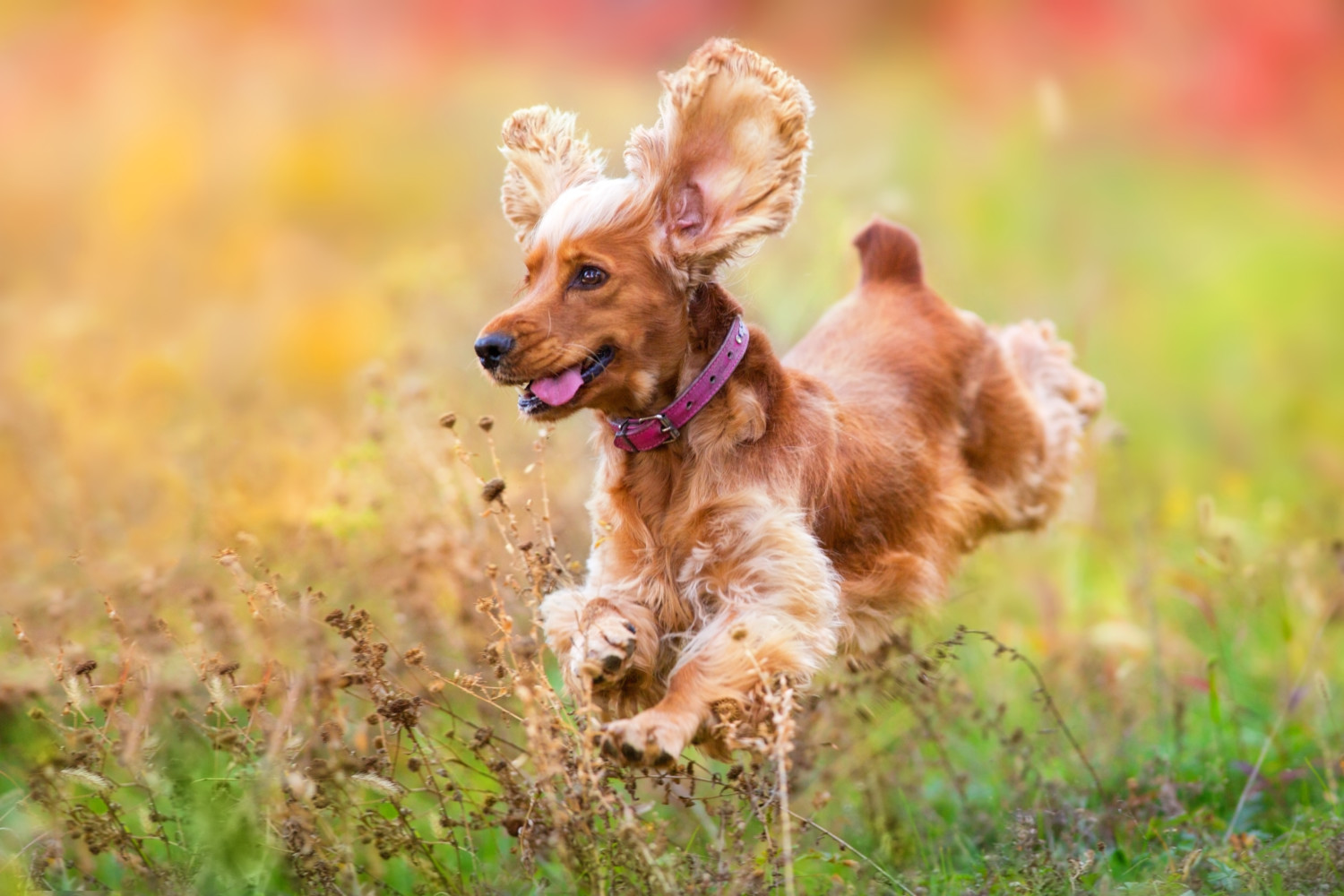You’re hanging out at home, enjoying a relaxing evening, when your pooch suddenly starts sprinting around the house. They might repeatedly run in the same path, zip in circular motions or dart with seemingly no direction like a furry, four-legged maniac. It doesn’t take long to determine that you are witnessing a case of dog zoomies.
But what are the zoomies, and why do they seem to take over even the calmest canines? Learn why dogs sometimes take off in a frantic dash or whirl in a frenzied spin, and find out what to do when the zoomies take over.
What Are Dog Zoomies?
According to the American Kennel Club (AKC), “zoomies” may also be called Frenetic Random Activity Periods or FRAPs. The first time seeing dog zoomies can be a cause for concern for pet owners.
A dog with zoomies usually displays repetitive behavior. For example, they might run around the living room or sprint around the perimeter of the backyard as though they were on a racetrack. The pup will typically tuck their rear end, round their back and stay low to the ground like they are crouching or cowering.
Their eyes will be wide and rather wild-looking, their mouth will probably be open in a doggy grin and their tongue might even loll out of their mouth. They will speed around as though something was chasing them.
As bonkers as your dog might appear, though, you can rest assured that dog zoomies are not a sign of illness or discomfort.

Why Do Dogs Get The Zoomies?
Many causes may trigger dog zoomies. They are frequently a response to pent-up energy that can happen after spending several hours in a crate, resting all night or missing a walk.
Your pup might get a case of the zoomies after a nerve-wracking situation, such as a bath, vet appointment or groomer visit. Their fight-or-flight response triggers an adrenaline release, which causes them to be full of energy.
“They are bursts of energy like a volcano,” certified applied animal behaviorist Jill Goldman, Ph.D., told the AKC. “Energy builds up, then there is the expression and release of that energy.”

Zoomies can even be a result of canine peer pressure.
“Sometimes they can be triggered by watching other pets, children or people engage in high-energy, playful behavior,” Dr. Rachel Barrack of New York City’s Animal Acupuncture told Chewy.
But dogs can get the zoomies simply from being happy.
“It’s their best expression of being happy,” Dr. Zac Pilossoph, a consulting veterinarian at Healthy Paws Pet Insurance, told People. “The term ‘zoomies’ is colloquial and describes behavior many pet parents have experienced. Still, your dog can get the zoomies during a few scenarios, like when an owner comes home or uses a favorite toy. The zoomies can best be defined as a dog’s most excited expression of happiness.”
How To Handle Dog Zoomies
There is generally nothing worrisome about dog zoomies. You can let your furry friend zip around until they have run out of that extra energy.
However, keeping your dog safe during a zoomies outburst is essential. For instance, try to keep them away from stairs, slick surfaces and other areas where they could slip or fall and suffer an injury. Instead, steer your pup onto a surface with better traction, such as grass or carpeting.

If your dog gets the zoomies outdoors, prevent them from running into the street. However, try to avoid chasing them, as they are likely to think it is a game. Instead, offer a treat or a favorite toy, and then slip on a leash or lead them indoors.
You can also try running in the opposite direction if your pooch is especially elusive. Your lively pup will think you want to play and will likely chase after you.
It can be helpful to pup-proof the area before stressful situations, such as bath time. Then, you can sit back and laugh as your silly pooch speeds through the house.
Do Other Pets Get Zoomies?
Many other animals can get the zoomies. For instance, cats can zip wildly through the house or yard after a long nap or when they are practicing their hunting skills.
Some cats will sprint around after using the litter box. This behavior may be a sign of discomfort caused by infection, inflammation or constipation, so it is wise to check with your vet if this occurs.

Rabbits are another pet that commonly gets the zoomies. When they are happy and energetic, bunnies will run, jump, twirl and “binky,” which can be a high jump while the rabbit slightly twists its body and head, or a sharp head flick accompanied by a slight ear wiggle.
Generally speaking, when your dog, cat or other pet has the zoomies, there is no need to worry. But if other physical symptoms or behavioral concerns accompany your pet’s zoomies, a quick call to your vet is always a good idea.
This story originally appeared on Simplemost. Checkout Simplemost for additional stories.


